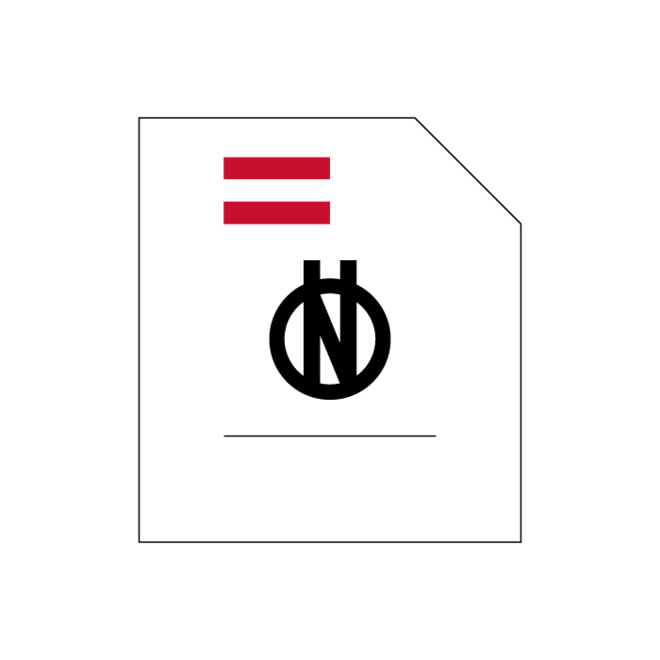Jetzt anpassen und kaufen
72,72 €
exkl. USt.
Konfigurieren


Norm
ÖNORM EN ISO 17072-2
Ausgabedatum: 2019 07 01
Leder - Chemische Bestimmung des Metallgehaltes - Teil 2: Gesamtmetallgehalt (ISO 17072-2:2019)
Dieses Dokument legt ein Verfahren zur Bestimmung des Gesamtgehaltes von Metallen in Leder fest, indem ein Aufschluss des Leders und danach eine Bestimmung der Metalle mi...
Weiterlesen
ZURÜCKGEZOGEN
: 2022 12 16
Herausgeber:
Austrian Standards International
Format:
Digital | 15 Seiten
Sprache:
Deutsch
| Englisch
| Download DE/EN
Aktuell Gültig:
Standards mitgestalten:
ICS
Dieses Dokument legt ein Verfahren zur Bestimmung des Gesamtgehaltes von Metallen in Leder fest, indem ein Aufschluss des Leders und danach eine Bestimmung der Metalle mittels optischer Emissionsspektro-metrie mit induktiv gekoppeltem Plasma (en: inductively coupled plasma optical emission spectrometry, ICP-OES), Massenspektrometrie mit induktiv gekoppeltem Plasma (en: inductively coupled plasma mass spectrometry, ICP-MS), Atomabsorptionsspektrometrie (en: atomic absorption spectrometry, AAS) oder Atomfluoreszenzspektrometrie (en: spectrometry of atomic fluorescence, SFA) durchgeführt werden.
Dieses Verfahren bestimmt den gesamten Metallgehalt in Leder; es ist nicht spezifisch für die jeweilige chemische Verbindung oder spezifisch für den Oxidationszustand der Metalle.
Das Verfahren ist zur Bestimmung der folgenden Metalle anwendbar:
Aluminium (Al), Kupfer (Cu), Kalium (K), Antimon (Sb), Eisen (Fe), Selen (Se), Arsen (As), Blei (Pb), Silicium (Si), Barium (Ba), Magnesium (Mg), Natrium (Na), Cadmium (Cd), Mangan (Mn), Zinn (Sn), Calcium (Ca), Quecksilber (Hg), Titan (Ti), Chrom (Cr) (ausgenommen chromgegerbtes Leder), Molybdän (Mo), Zink (Zn), Kobalt (Co), Nickel (Ni), Zirconium (Zr)
Dieses Verfahren ist außerdem zur Bestimmung von Bor (B) in Leder geeignet.
Bei chromgegerbtem Leder ist es häufig sinnvoller ISO 5398-1, ISO 5398-2, ISO 5398-3 oder ISO 5398-4 anzuwenden.
ÖNORM EN ISO 17072-2
2022 12 15
Leder - Chemische Bestimmung des Metallgehaltes - Teil 2: Gesamtmetallgehalt (ISO 17072-2:2022)
Norm
ÖNORM EN ISO 17072-2
2019 07 01
Leder - Chemische Bestimmung des Metallgehaltes - Teil 2: Gesamtmetallgehalt (ISO 17072-2:2019)
Norm
↖
ÖNORM EN ISO 17072-2
2011 05 15
Leder - Chemische Bestimmung des Metallgehaltes - Teil 2: Gesamtmetallgehalt (ISO 17072-2:2011)
Norm
Norm
ISO 17072-2:2019
Ausgabedatum :
2019 02 28
Leather — Chemical determination of metal content — Part 2: Total metal content
Norm
ISO 2418:2017
Ausgabedatum :
2017 01 31
Leather — Chemical, physical and mechanical and fastness tests — Sampling location
Norm
ISO 3696:1987
Ausgabedatum :
1987 04 09
Water for analytical laboratory use — Specification and test methods
Norm
ISO 4044:2017
Ausgabedatum :
2017 01 03
Leather — Chemical tests — Preparation of chemical test samples
Norm
ISO 4684:2005
Ausgabedatum :
2005 11 10
Leather — Chemical tests — Determination of volatile matter
Norm
ISO 11885:2007
Ausgabedatum :
2007 07 30
Water quality — Determination of selected elements by inductively coupled plasma optical emission spectrometry (ICP-OES)
Norm
ISO 15586:2003
Ausgabedatum :
2003 10 08
Water quality — Determination of trace elements using atomic absorption spectrometry with graphite furnace
Norm
ISO 17294-2:2016
Ausgabedatum :
2016 07 04
Water quality — Application of inductively coupled plasma mass spectrometry (ICP-MS) — Part 2: Determination of selected elements including uranium isotopes
Norm
ISO 17852:2006
Ausgabedatum :
2006 05 22
Water quality — Determination of mercury — Method using atomic fluorescence spectrometry
Norm
ÖNORM EN ISO 17072-2
Ausgabedatum :
2022 12 15
Leder - Chemische Bestimmung des Metallgehaltes - Teil 2: Gesamtmetallgehalt (ISO 17072-2:2022)
